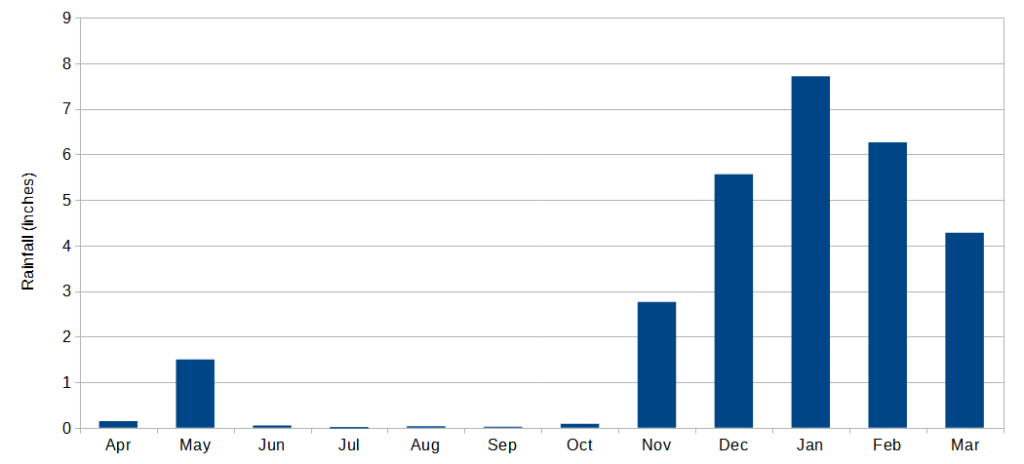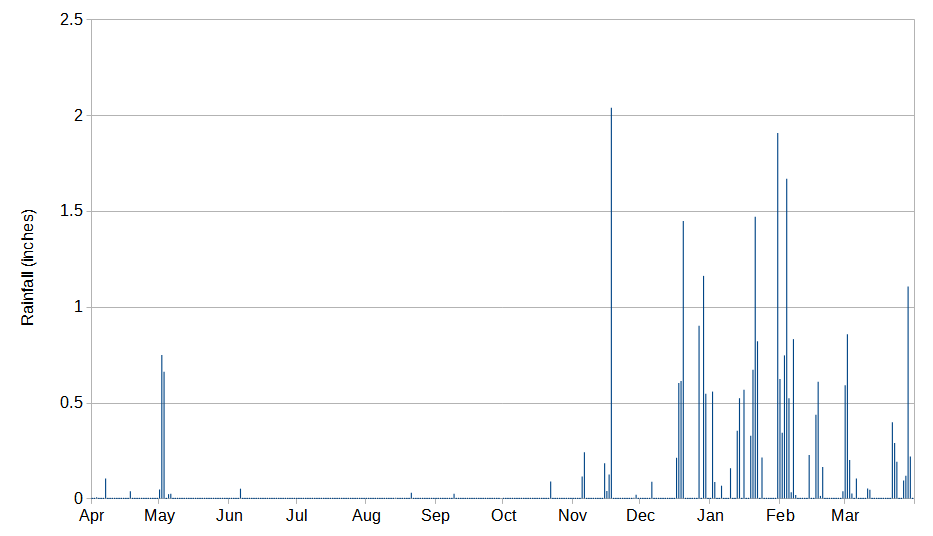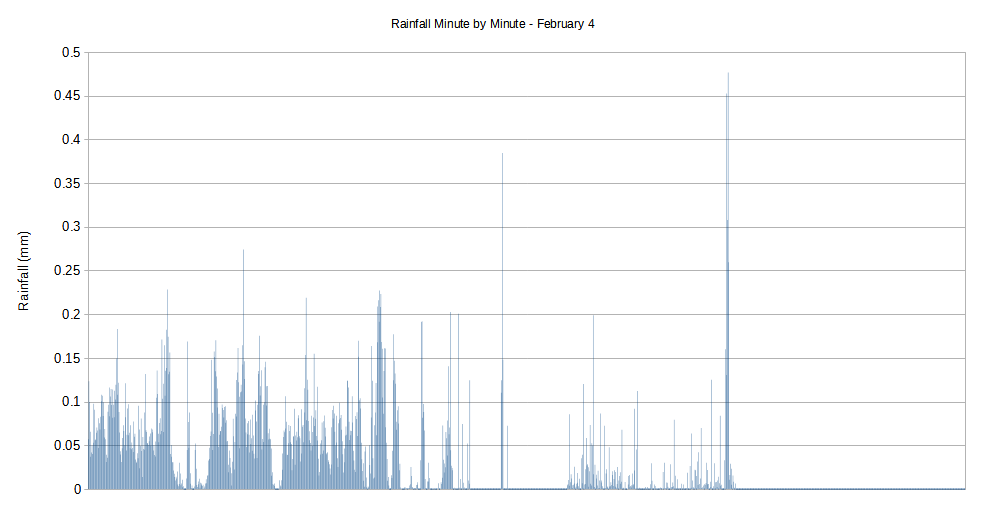Let’s look at the rainfall that my personal weather station reported over the past 12 months (April 2023 – March 2024). For the year, we got 28.46 inches of rain. Here are the monthly totals:

This clearly shows the rainy season in Santa Cruz: late Fall through Spring. But it doesn’t always rain during those months. On a day-to-day basis, rainfall tends to be more abrupt. Even during the rainy season it rains some days, and not others. You can see this with a chart of daily rainfall:

Even within a given day, there is a lot of variation. The Tempest system reports weather info every minute, so we can track how often it is actually raining. During a typical “rainy” day, that might be 120 minutes or so – just 2 hours out of 24. The rainiest day, as defined as “the day when rain was falling most of the time”, was February 4th, when it rained during 766 of 1440 minutes (53.2%). So even during the rainiest day, it’s raining barely half of the time. Here’s what February 4th looks like:

Sometimes when it rains, it pours. Here’s a table of rain bursts – the heaviest rain over a short period of time.
| Burst Length | Date/Time | Rain amount | Full hour equivalent |
| 1 minute | March 2nd, 5:37 PM | 1.932 mm | 4.6 inches |
| 2 minutes | March 2nd, 5:36 PM | 3.588 mm | 4.2 inches |
| 15 minutes | Nov 18th, 4:47 AM | 16.929 mm | 2.7 inches |
| 30 minutes | Nov 18th, 4:39 AM | 26.909 mm | 2.2 inches |
| 60 minutes | Nov 18th, 4:26 AM | 35.229 mm | 1.4 inches |
Other rain factoids:
- There was measurable precipitation 70 days of the year (366 days), or 19.1%.
- There was measurable precipitation 11,058 minutes out of the year, which works out to 2.1% of the time.
- The longest streak of no rain was nearly 69 days: June 6 at 11:38 AM to August 14 at 7:40 AM.
- The longest streak of constant rain (measurable rain every single minute): 10 hours, 48 minutes, from February 3rd 3:48 PM to February 4th at 2:35 AM.
